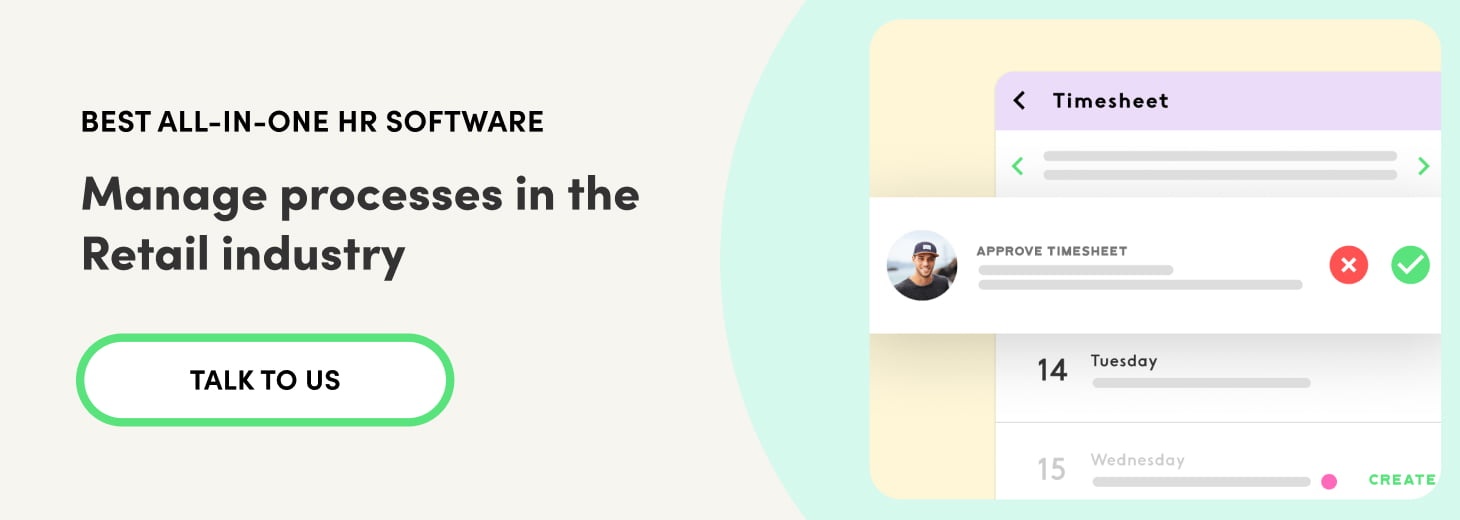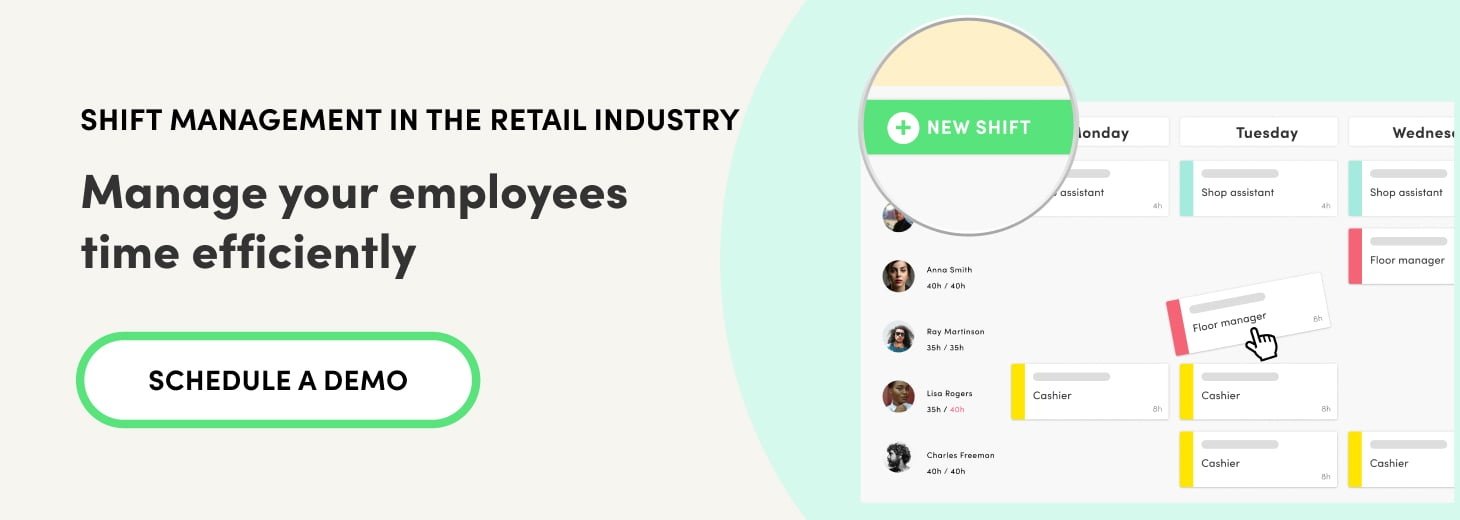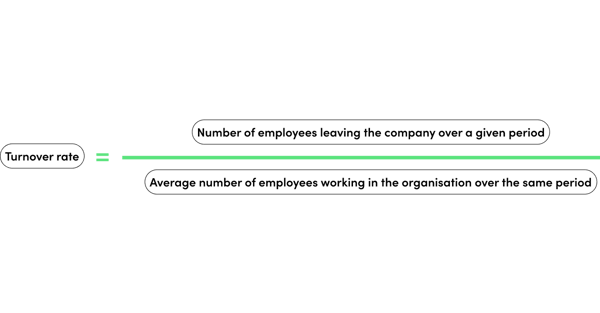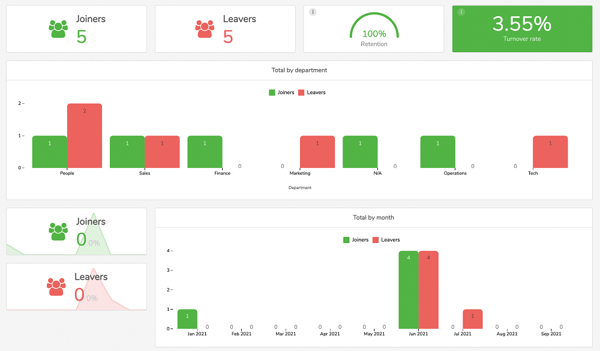The retail sector is notorious for high levels of resignations, so: how can you reduce staff turnover in retail? Every employee that leaves is an important loss of talent, expertise and money. So, it is worthwhile implementing all the measures at your disposal to improve retention and minimise this trend.
The top turnover rates in retail
Leaving rates in the retail industry are usually 1.4 times higher than those of other industries. However, this trend accelerated during the pandemic, reaching 1.5 times higher.
The cost associated with employee turnover is steep. Some estimates argue that losing a worker can cost between 1.5 and 2 times their salary. And this figure can vary depending on seniority. Substituting a high-level management position can end up costing 213% more than their salary.
While turnover is costly, however, the main financial impact for the company is found in the increase in salaries. As retail moved further into the online market, it was necessary to incorporate new roles that earn on average 21% more than shop workers.

8 strategies to reduce staff turnover
These figures may not be encouraging, but it is possible to use certain strategies to reduce employee leaving rates in retail businesses.
1. Hire the right person to begin with
Finding the best candidate for the position means they are more likely to stay at the company for longer. As well as fulfilling all the technical requirements involved in the role, the person must also fit in with the company culture.
To know if you are making the right decision, spend time getting to know all the candidates. Make a list of the ideal qualities the professional should have and ask all the questions you need to find out if they fit the requirements.
Holding interviews can be tedious, but it will save you time and money in the long run. Make sure that the professional you have in front of you can work in a team and will treat your customer well. Using recruitment software will help you to reflect on all the factors you need to take into account and find out, objectively, which candidate is best for the position.
What’s more, you can also analyse where the hires are coming from to find out which recruitment source is delivering the best results on your search. For this, digital reports and analytics can prove invaluable.

2. Create career plans and promote internal growth
Data from Deloitte reveal that 43% of millennials think they will leave their jobs in the next two years. It also suggests that Generation X workers are the least happy in their current jobs. According to Willis Towers Watson, 70% of employees believe they will have to leave their current job to advance their professional careers.
There is one clear conclusion from this data: if you want your employees to stay with you, let them grow and develop as professionals in your company.
Career plans, internal promotions, mentoring programmes; there are many measures that can help workers feel valued and prevent them thinking that they need to move to another company to grow.
Ultimately, if you provide stimulus and tools for professional growth, it is much more likely that employees will opt to stay with your company.
3. Offer fair salaries and attractive benefits
If you want your employees to perform at their best and stay with your company for a long time, you need to offer them a fair salary and appealing incentives.
You can offer access to health insurance, more paid holidays, gym passes, restaurant vouchers, or flexible hours, among other things. These are small things that don’t necessarily mean a huge financial impact on the company but will undoubtedly make a difference for employees.
Whatever you do, try to prioritise the measures that your employees are most interested in.
4. Promote a positive company culture
You can also reduce staff turnover in retail by creating a work environment that attracts and involves workers. This can be relaxed and informal, or very strict and formal, depending on the type of professional we want to hire.
Promoting the general wellbeing of employees simultaneously improves their engagement. A way of measuring this aspect is to use staff satisfaction surveys, which will give us an idea of how the staff are feeling and help us calculate the eNPS (Employee Net Promoter Score).
5. Analyse the turnover rate
Carrying out an analysis of staff turnover filtered by department, office and even business, will help you to identify structural or isolated problems occurring in certain areas. In this way, you will be able to put specific measures in place to reduce employee turnover.
The employee turnover rate is calculated by dividing the number of employees leaving the company in a given period by the average number of employees working at the company during the same period.

People Analytics software can be a great help by calculating this automatically and digitally, as it allows you to import data from Excel spreadsheets, access automatically generated reports, download the information and filter searches, among many other functions.

6. Award employees with more responsibility
Often team leaders need to focus on those workers that are behind on their targets; however, it is important not to ignore those who are doing a good job.
Both HR and the line manager should pay attention to workers who are delivering high performance levels in their work. As well as conveying positive feedback, we recommend granting more responsibility or a leadership role.
The confidence placed in the worker will make them feel valued and appreciated, which will, in turn, increase the likelihood of them staying at the company.
7. Design a good onboarding process
Once you have selected the right person for the vacancy, invest as much as you can in integrating them into the company. In other words, design a good onboarding process.
The first months at the company are key for new starters to feel part of the team and obtain all the information and tools they need to carry out their job correctly.
It is important that during this phase they learn what their role is within the company, what is expected of them, what their goals are and which paths they can take within the organisation if they develop well.
8. Learn from every worker
Reducing employee turnover in retail shouldn’t be difficult if we provide a secure and sufficiently motivating workplace. However, there will inevitably be some employees who decide to leave the company. It is important to analyse the reasons why the worker has taken this decision and try to learn from them.
%20(1).jpg)




